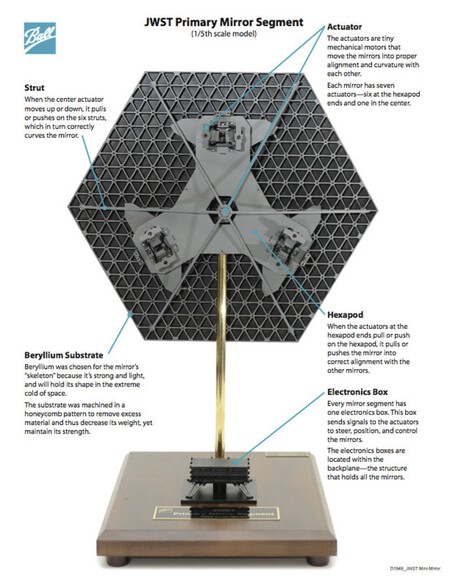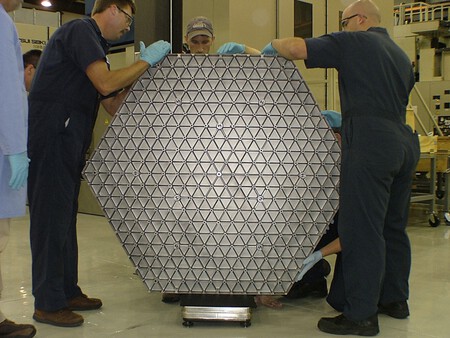The James Webb Space Telescope unfolds its mirrors, and that they are made of very hard beryllium

The NASA Has celebrated another milestone in the James Webb Space Telescope mission. Upon its release on Christmas Day 2021, the telescope has already managed to fully unfold the 18 segments of its mirror, another crucial stage that now has to be completed with the alignment of those mirrors.
The agency explained how these primary segments have been “extracted” 12.5 mm from the structure, which will now allow align and adjust so that its ability to capture infrared rays is perfect. The actuator system has been effective even taking into account that the skeleton of each mirror is made of beryllium, a material six times stronger than steel.
One more step that brings us closer to those long-awaited photos of our universe
What explain in their detailed information base, beryllium is a light metal that is particularly well suited to the James Webb Space Telescope. It is very strong considering its weight, it is not magnetic and its characteristics mean that it has been frequently used in supersonic aircraft and in the Space Shuttle.

Schematic of one of the 18 segments of the main mirror of the James Webb Space Telescope.
Each of those segments is controlled by seven actuators that allow the control team on Earth to manage its orientation precisely.
The NASA explained how the motors of those mirrors made more than a million revolutions during these days to move the 132 actuators at the rear of the segments. Even with a material as hard as beryllium, motors “can individually profile the curvature of each segment of the mirror“.

The deployment of the segments began on January 12 and it took almost a week to complete, but even so the telescope is still far from being operational.
Now it is necessary to align each segment for a perfect fit, something that will take approximately three months. Even after the alignment it will be some time before we receive the first images from the telescope, which are expected to be taken this summer.
More information | NASA
Reference-www.xataka.com